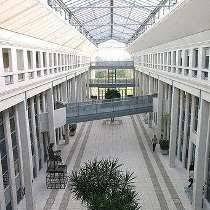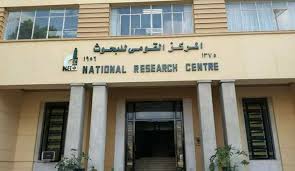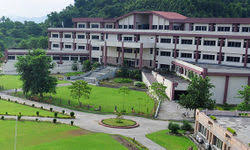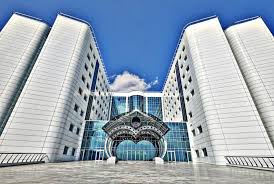Day 1 :
- Medicinal Chemistry Webinar | Drug Discovery | Chemistry Conferences | Chemistry Congress
Location: Webinar

Chair
Federica Moraca
University of Naples, Italy
Session Introduction
Dubreuil Didier
Université de Nantes, CNRS, CEISAM UMR 6230, F-44000 Nantes, France
Title: iNKT Activation by Potent Alpha-Galcer Analogues and anti-EGFR-Antibody Glycoconjugates as Useful Tool for Onco-Immunotherapy

Biography:
Didier Dubreuil has completed is PhD in 1989 at the ICSN (Institut de Chimie des Substances Naturelles, Gif/Yvette France). He is currently a full professor at the University of Nantes in CEISAM laboratory (CNRS 6230) working at the interface of chemistry and biology. He has over 85 publications and 14 international patents.
Abstract:
CD1d restricted T lymphocytes, a subclass of human lymphocytes, appears to be major players of the immune response. A subpopulation of the CD1d restricted lymphocytes, called iNKT cells, bears a TCR receptor and reacts against ï¡-galactosylceramides (ï¡-GalCer). Recognition of ï¡-GalCer (KRN7000) bound to CD1d molecule of an antigen presenting cell, leads to the fast and strong secretion of a large panel of cytokines. These cytokines can stimulate the maturation of dendritic cells, activate the proliferation of IFNï§ synthesis and stimulate cytotoxic CD8 lymphocytes. These mechanisms contribute to the control of tumor progression.
In view to highlight the potency of deoxy-analogues of ï¡-GalCers to modulate the iNKT response, we evaluated the effect of combined alterations of the sphingoid base devoid of both 4-OH1 and 3-OH groups by substitution with one or two fluorine atoms.2,3 We shown that, despite suppression of the H-bond donating capacity with CD1d, electron isoelectronic effect of one or two fluorine atoms, vs. oxygen, can modulate the lack of the sphingosine 3-OH on the destabilisation of the CD1d/GalCer/TCR complex by reinstating favourable interactions.
In our continuing efforts to improve iNKT activation, we recently discovered novel a-GalCer analogues proved to be more potent by several orders of magnitude than a-GalCer for IFN-ï§ secretion. Intriguingly, unlike a-GalCer, they also proved to be active when loaded on several human cancer cell lines known as not expressing CD1d. This latter result reveals a paramount effect of modified a-GalCer on CD1d/TCR complex stabilization that occurs on cancer cell bed without recruitment of usual APCs. With the aim to mediate a local immune response close to tumour environment, selected a-GalCer derivatives have been associated to the anti-EGFR monoclonal antibody. We found that monoclonal antibody glycoconjugates are able to restore iNKT stimulation at a nM range while keeping antibody cytotoxicity
Sohair Aly Hassan
National research Center,Cairo,Egypt
Title: The Conquering influence of the Nano extracts of pomegranate peels and pistachio leaves in amelioration of acute liver failure

Biography:
Sohair Aly hassan, Ph.D., is academic scientist with over 25 years’ experience leading multi-disciplinary international line and matrix-research teams spanning target identification to clinical candidate selection. Sohair also has broad academic experience in physiology teaching modalities with a record of successful enterprise leadership and collaborative working. she has published more than 30 papers in reputed journals and has been serving as an editorial aboard member of reputable journals.
Abstract:
Introduction: Acute liver failure (ALF) is a clinical condition with an unclear history of pathophysiology, making it a challenging task for scientists to reverse the disease in its initial phase and help liver to re-function as usual: This study was proposed to estimate the hepatoprotective effects of Punica granatum L peel and Pistacia atlantica leaves as a multi-rich antioxidants ingredients either in their normal and/or in their nano forms against thioacetamide induced acute liver failure in a rodent model.
METHODS: Sixty male Wistar rats were divided into six equal groups, the first group being used as a control; the second group was given a dose of thioacetamide (TAA)-350 mg/bw ip., from the third to the sixth group received TAA â‚Š 2ml of 100gm of aqueous extracts of Punica granatum L and Pistacia atlantica either in their normal and/or Nano forms consecutively along 2 weeks.
Results: The results recorded significant elevation in liver enzymes, lipid profiles, LPO and NO with marked significant decrease in GSH and SOD accompanied by elevation in inflammatory cytokine ( IL6,TNF-α and AFP) in addition to a noticeable increase in HSP70 level & degradation in DNA respectively in TAA challenged group. However significant and subsequent amelioration of most of the impaired markers has been observed with ip nano treatment of both extracts. Conclusion: The current results highlighted the high performance of both plant nano extracts and their hepatoprotective impact and their possible therapeutic role in the amelioration of TAA induced acute liver failure in experimental animals.
Keyword: Acute liver failure, thioacetamide, HPLC, nano extracts, TNF-α, IL6.
Manash Jyoti Deka
Indian Institute of Technology Guwahati, Assam, India
Title: An efficient metal free methodology for the Synthesis of thiomorpholine derivatives via intramolecular Lewis acid mediated cyclization of N-tethered thioalkenols.

Biography:
Dr Manash Jyoti Deka has completed his PhD at the age of 30 years from IIT Guwahati. He has published more than 10 papers in reputed journals. He is currently working as an Assistan Professor in the Department of Chemistry, Assam Don Bosco University.
Abstract:
Tetrahydropyrans and its derivatives are important structural moiety of many bioactive naturally occurring molecules.1 They are found in many petroleum products 2 and also play a key role in the biological activities of a number of pharmaceutical agents.2 Syntheis of these tetrahydrothiopyran moieties hava always been an exciting challenge for the synthetic organic chemists. Hence an efficient, metal free, methodology for the diasterioselective synthesis of dihydropyrans using Prins enol-ether cyclization reaction from enol ethers mediated by trimethylsilyl trifluoromethanesulfonate (TMSOTf ) in good yields under mild reaction conditions has being developed.

The reaction of thioenol-ether derivatives with TMSOTf in dry dichloromethane and nucleophiles was carried out at 0oC. The reaction with TMSOTf in Toulene/CH2Cl2 (1:1) solvent system produced 2,4,6-trisubstituted tetrahydrothiopyrans in 75% yield with dr 88:12. The structure of the compounds were confirmed by 1H, 13C NMR, IR and mass spectrometry. The diastereomeric ratio was determined from the 1H NMR of crude reaction mixture. The reaction was also screened with various Lewis and Brϕnsted acidswith an aim to synthesize dihydrothiopyran ring system.
Simone Carradori
University of Chieti-Pescara, Italy
Title: Synthesis and biological evaluation of carvacrol-based derivatives as dual inhibitors of H. pylori strains and AGS cell proliferation

Biography:
Dr. Simone Carradori completed his PhD in “Pharmaceutical Sciences” at Sapienza University of Rome (Italy). Dr. Simone Carradori has collaborated and still collaborates with several departments abroad. Now he is assistant professor at the Department of Pharmacy of “G. d’Annunzio” University of Chieti-Pescara (Italy). The scientific activity is mainly focused on the characterization and synthesis of heterocyclic derivatives with potential biological activity, and is documented from about 181 papers in international peer-reviewed journals, one patent and participations in numerous conferences. He is in the Editorial Board of several peer-reviewed journals.
Abstract:
This study reports on the synthesis, structural assessment, microbiological screening against several strains of H. pylori and antiproliferative activity against AGS cells of a large series of carvacrol-based compounds. Structural analysis consisted of elemental analysis, 1H/13C/19F NMR spectra and crystallographic studies. Starting from these premises and keeping in mind that the development of drugs from plant secondary metabolites is a topic of the most recent ongoing research and engages large-scale pharmacological screenings of extracts and active compounds, we aimed at designing a large library of carvacrol-based derivatives possessing multiple tunable functional groups for their chemical modulation to desired properties and assuring the broadest chemical diversity. Indeed, natural product derivatives could shed light on new therapeutic agents against human diseases due to the modulation of the physical-chemical, toxicological and drug-like characteristics of their natural parent compound. This is very important when also addressing pathologies such as gastric cancer where a pluralism of causative factors must be faced by a feasible research strategy which can evolve a multi-targeted perspective (one molecule acting on separate targets of the disease). Moreover, this approach can overcome issue related to combination therapy and the possibility of drug-drug interactions. These newly synthesized compounds can be regarded as new lead compounds able to reduce H. pylori growth and to counteract the proliferation of AGS cells.
Osarumwense Peter Osarodion
Ondo State University of Sciences and Technology, Nigeria
Title: Anti-Inflammatory activity Of newly synthesized 7-chloro-2-methyl-4H-benzo [d] [1,3]-oxazin-4-one and 3-amino-7-chloro-2-methyl-quinazolin-4(3H)-one

Biography:
DR. OSARUMWENSE PETER OSARODION has completed his PhD in Organic Chemistry at the Federal University of Benin, Benin City, Edo State, Nigeria at the age of 35 years. He is the Lecturer of Ondo State University of Science and Technology, Ondo State, Nigeria a premier University. He has published more than 22 papers in reputed journals and has been serving as an editorial board member of repute.
Abstract:
Heterocyclic chemistry comprises at least half of all organic chemistry research worldwide in particular, heterocyclic structures form the basis of many pharmaceutical, agrochemical and veterinary products. The condensation of Methyl-2-amino-4-Chlorobenzoate with acetic anhydride yielded the cyclic compound 2-methyl 7-Chloro-1, 3-benzo-oxazine-4-one (1) which further produce 3-Amino-2-Methyl 7-Chloro quinazolin-4(3H)-ones (2) via the reaction with hydrazine hydrate. The compounds synthesized were unequivocally confirmed by means of Infrared, Nuclear Magnetic Resonance (1H and 13C), Gas Chromatography-Mass spectrophotometry and Elemental analysis. Compound 1 and 2 has Anti-inflammatory activity of 96.78%, 95.71% and 97.62%, 95.35% at 10mg/kg and 20mg/Kg dose levels. Compound 1 has IR spectrum showed signals for carbonyl functional group at 1662 cm-1, C-O and C-H stretch vibrations at 1102 cm-1 and 2871 cm-1respectively. The 1H NMR spectrum showed three aromatic protons at δH 7.59, 7.16 and 6.40 and a vinyl methyl protons at δH 2.57..In the 13C NMR spectrum, the ester carbonyl resonated at δC 168.08, while the aromatic carbons resonated in the range δC 113.40 – 149.23. The resonances at δC 153.13 and δC 22.15 were due to the imine oxygenated carbon (C-1) and the methyl carbon respectively. Compound 2, had NMR data similar to1, except for an additional signal at δH 5.80 in the 1H NMR spectrum which was attributed to the amino protons (2H). Compound 2 had a higher anti-inflammatory activity than Compound 1. The compounds synthesized had a higher anti-inflammatory activity than Indomethacin, a standard anti-inflammatory drug.
Paul Zavala-Rivera
Universidad de Sonora, 83000, Hermosillo, México
Title: Micelle encapsulation of ferromagnetic nanoparticles of iron carbide@iron oxide in chitosan

Biography:
Zavala-Rivera has completed his PhD at the age of 29 years from Cambridge University and postdoctoral studies from Universidad de Sonora. He is the Professor in Bionanoenginering in the Universidad de Sonora, one of the top universities in Mexico. He has published more than 17 papers in reputed journals in the areas of nanotechnology, biomateriales and bionanotechnology.
Abstract:
In this work, the synthesis and characterization of core@shell nanoparticles of Fe3C/γ-Fe2O3 encapsulated into micelles of sodium dodecylsulfate and oleic acid stabilized with chitosan was developed. The nanoparticles were sonosynthesized at low intensities using iron pentacarbonyl (Fe(CO)5) and oleic acid as iron source and hydrophobic stabilizer, respectively; obtaining a hydrodynamic diameter of 19.71 nm and PDI of 0.134. These nanoparticles were used as the organic phase during the production of a nanoemulsion with sodium dodecylsulfate and water. The final step, involved the stabilization of the nanoemulsion using low molecular weight chitosan solution at 2% in acetic acid by ultrasonication. The nanosystem showed a hydrodynamic diameter of 185.3 nm, a PDI of 0.150 with a superficial charge ζ of 36.7 mV. Due to these physical and chemical properties, it is believed that this type of nanoparticles can be use as theranostic agent.
Emine Erdag
Near East University Faculty of Pharmacy, North Cyprus
Title: Studies on new 2(3H)-benzoxazolone derivatives: synthesis, characterization and cytotoxic effects

Biography:
Emine Erdag was graduated and has been doing her PhD at Near East University Faculty of Pharmacy /Department of Pharmaceutical Chemistry. Her thesis subject is about 2(3H)-Benzoxazolone derivatives which are considered ideal scaffolds for synthesis of drug candidates. They have been of interest in medicinal chemistry since they are readily available, affordable and susceptible to chemical modifications. 2(3H)-Benzoxazolone derivatives have been reported to show diverse biological activities depending on the position and type of the substituent. Their pharmacological activities include antibacterial, antifungal, analgesics-antiinflammatory, anti-nociceptive and anticancer.
Abstract:
2(3H)-Benzoxazolone derivatives have been reported to show diverse biological activities depending on the position and type of the substituent. Recent studies show that these types of molecules could also show promising anticancer activities. A series of new Mannich bases of 2(3H)-benzoxazolone derivatives have been prepared. These molecules have piperazine group at the third position of the core structure. The structural characterization of these compounds was performed by FT-IR, 1H NMR and ESI-MS analysis. These 2(3H)-benzoxazolone derivatives were analyzed for their cytotoxicity toward MCF-7 cancer cell line. Different concentrations of these molecules were incubated for 24 h and 48 h. MTT assays were employed to measure cytotoxicity and cell growth. Our results showed that, among all concentrations of 2(3H)-Benzoxazolone derivatives studied (5, 10, 20, 50 and 100 μg/ml), dimethylphenylpiperazine substituted derivative, at 50 μM concentration was more effective at inhibiting MCF-7 cell growth compared with other dilutions for 24 h and 48 h incubation period.







